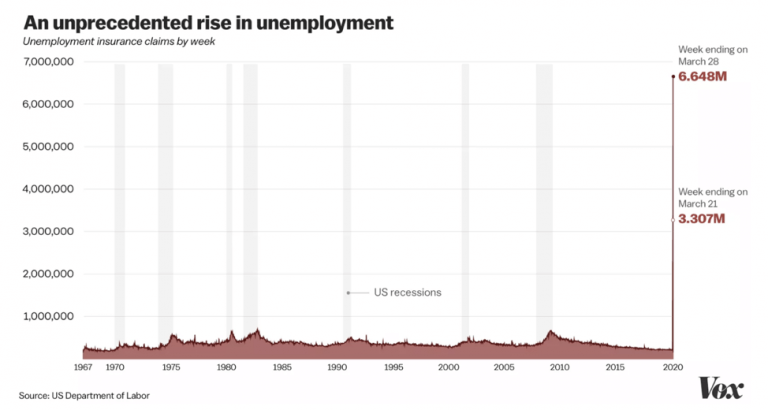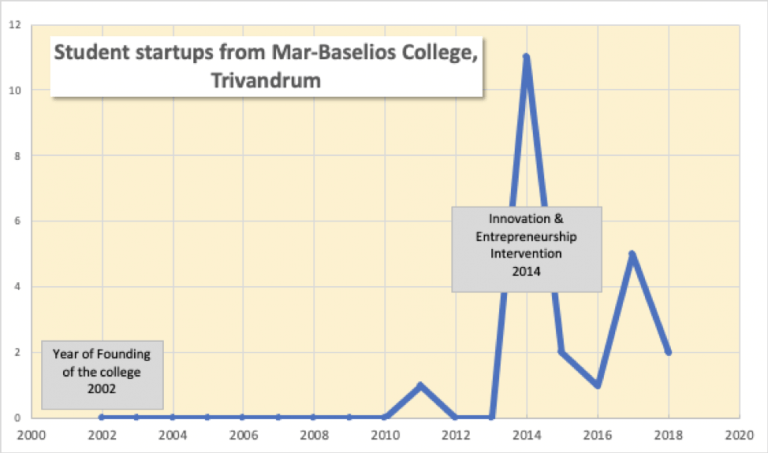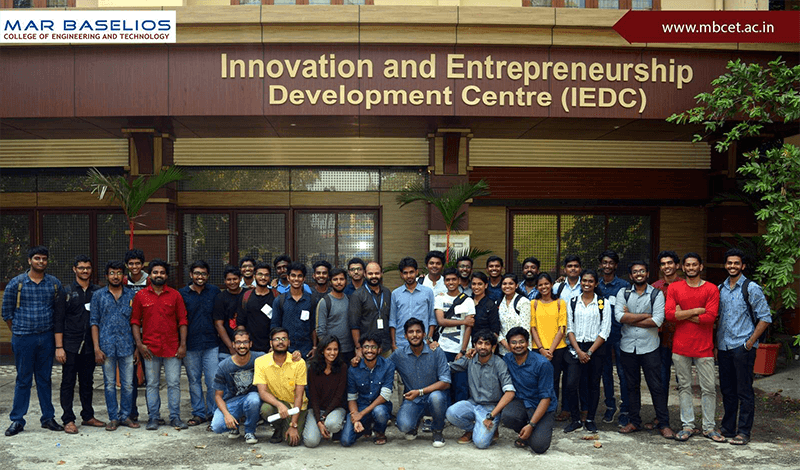How building an entrepreneurship ecosystem could bring jobs and wealth to the community.
What will the future look like after COVID-19? The pandemic has revealed that the world’s economic and social infrastructure is not prepared to contend with the unprecedented crisis or looming recession. In the United States, the Small Business Administration expects half of the 30 million small businesses to close and lose 47 million jobs due to the pandemic, leaving 32% unemployment this year1.
The US is not alone, every other country is bracing for a similar challenge. This will affect every one of us, no matter where we live or what we do. Not only will families and individuals suffer from the inability to support themselves through basic needs, but it also affects businesses.

Large and small corporations struggle or fail due to a lack of customer consumption, leaving behind areas that once had high commerce and a thriving job market into clusters of job-deserts. Businesses could take months to years to recover from losses, deepening the cycle of unemployment, poverty, and breakdown of social structure. Per Okun’s law, for every 1% rise in the unemployment rate, the GDP, the revenue created by a nation, could drop by 2%.
The expected rising unemployment would have a devastating effect on any state. This affects government spending, corporate profits, personal incomes, and the quality of life of the citizens. Every nation will be navigating these uncharted waters, facing severe crises, which some economists predict will last much longer than that of 2008.2
Can We Bring Lost Jobs Back or Create New ones Anytime Soon?
How can corporations and governments help at this time? Most of these jobs will not return in the same form immediately after the virus is defeated. Corporations will not invest and hire until there is confidence in the market, so job growth may trail the resurgence of the economy. Governments, on the other hand, could launch large infrastructure programs to create short-term jobs to reboot the economy.
But these may include few high-paying, skill-based jobs that are essential to creating the momentum of sustainable job creation. Nations have already started announcing large stimulus packages to reignite the economy and employment. Typically a lot of it goes to help failing corporations and to support those who lost their jobs. But how do we create sustainable jobs with this stimulus fund? Can the funds be invested to create ‘jobs that create jobs’?
Entrepreneurs to the Rescue
Innovation Driven Entrepreneurs are a significant source of employment. They use creative approaches to solve existing or future problems faster, cheaper, and better with new tools and technologies. Companies like Uber and Airbnb solved age-old problems in creative ways with technology and minimum capital (they did not buy a million cars or hotel buildings). While producing extraordinary outcomes.
Moreover, they created hundreds of millions of jobs while solving an existing problem and creating wealth for all the stakeholders. MIT’s Bill Aulet and Fiona Murray made a strong distinction between a Small Medium Enterprise (SME) and an Innovation Driven Enterprise (IDE).3 An SME is defined as a company with a local business with limited growth potential, like a restaurant, and an IDE can scale fast to solve the same problem globally and grow significantly larger.
While SMEs use local skills and resources, IDEs can reach around the world to hire talent. When SMEs show linear growth, IDEs often grow at an exponential scale and create a more significant number of jobs than SMEs. These better-paying jobs spawn more secondary jobs and businesses locally, such as restaurants, dry cleaners, and taxi services. In this time of critical need for creating jobs, innovation-driven entrepreneurs are the catalysts we should seek to create.
This breed of entrepreneurs is usually multi-disciplined and analytical critical-thinkers who look for opportunities that could be scaled to reach customers far and wide. They work in close teams that are diverse in skills and culture. They are self-learners who are not afraid to learn from failures and build their confidence to face future unknown challenges.
My experiments with university students demonstrate that innovation-driven entrepreneurs can be created through interventions that cultivate their mindset and skill set. The boot camp conducted in 2014 at Mar Baselios College of Engineering and Technology, Trivandrum, India, to teach these skills and attitudes successfully turned a third of the participants into first-time tech entrepreneurs.
They inspired others to join them to build a thriving innovation and entrepreneurship ecosystem on campus. From this ecosystem emerged 21 ventures in a matter of four years (Fig. 2). All from a college that had one student startup in the previous twelve years since their founding. (Fig 3).

Figure 2: The number of student startups at MBCET significantly increased after a five-week Bootcamp on innovation and entrepreneurship in 2014.

Figure 3. The ecosystem at MBCET created the center to nurture innovation and entrepreneurship.
Build an Army of Entrepreneurs, Startups Will Follow
Joshua Lerner wrote that the majority of the entrepreneurship initiatives for building the next Silicon Valley in different regions in the world have failed.4 The current entrepreneurship programs primarily focus on creating next startups. The problem with measuring success based on short-term outcomes, such as the number of startups created, funds raised, and company valuation is that we are not focused on creating and training entrepreneurs of tomorrow but on startups for today.
Here, the young entrepreneur who is the engine of a startup is expected to perform miracles in her first attempt while essentially learning to walk. Thus these top-down programs often are not working to potential because they are not harvesting entrepreneurs from a larger population. The focus of these programs is on creating hit songs, not nurturing singers.
On the other hand, the entrepreneur’s primarily quality is a mindset of:
- vision, where she sees problems as opportunities in disguise
- drive, to bring together resources she doesn’t possess to gainfully execute on her vision
- empathy, to understand her customer’s challenge deeper to create the right solution.
Entrepreneurship is also a skill set of:
- system-thinking, the ability to break down a problem, understand the behavior of the parts
- problem-solving, of creating a method to address the problem that is acceptable to all the stakeholders
- value-capturing, of making an impact while creating wealth.
Can these qualities be taught? I truly believe from the experiments I have conducted that entrepreneurs can be forged from the average population.5 It may take several cycles to learn and practice these qualities, not unlike learning anything else. But, yes, it can be taught, and it is easier to learn at a younger age. The stimulus funds for rebuilding after the pandemic should be seriously considered for creating innovation-driven entrepreneurs from the bottom-up to change communities by creating high-value jobs.
Building Ecosystems for Innovation and Entrepreneurship
To paraphrase the proverb, it takes an ecosystem to raise future innovators and entrepreneurs. The conventional top-down concept of an ecosystem consists of supportive players such as active investors, government agencies, researchers and academics, and industry that demand innovation.
The bottom-up ecosystem suggested here consists of:
- Community: Made of similar thinkers, makers, entrepreneurs, mentors, and peers,
- Resources: Access to equipment, materials, talent, learning tools, and
- Space: A safe place to meet, exchange ideas freely, and work on projects in teams.
These bottom-up ecosystems are robust because they are created and run by inspired players who are also participants and beneficiaries. While the top-down approach creates structures, policies, and funds required to build companies; the bottom-up approach is trying to transform individuals by building skills and confidence required to create entrepreneurs.
Even though both top-down and bottom-up approaches are equally required to build a buzzing ecosystem, the current process consists mostly of the top-down one, which leads to a limited number of aspiring entrepreneurs entering the system. The bottom-up approach can significantly amplify it and help create a constant feedstock of aspiring entrepreneurs for the next phase.
We have created small maker labs in communities for the youth to practice the design and fabrication of technology products. After learning the basics of product creation, these youth seize the opportunity to create products to solve problems faced by their community. Subsequently, they realize the potential value of such products and learn to monetize it. For an individual to go through these experiences, she needs a nurturing environment and mentors, or an ecosystem.
Several of these new entrepreneurs may fail, but the ecosystem acts as the support system to help them recover and reboot. Bottom-up innovation and entrepreneurship ecosystems are cheaper to build and sustain. Such experiments of building entrepreneurship ecosystems, as done at Mar Baselios College in Trivandrum, have already shown significant results.5
Conclusion
The social upheaval that the COVID-19 pandemic leaves in its wake will last well beyond its health-related problems. Unemployment will rise as the prime factor that hinders rebuilding, leading to poverty and social unrest. A bottom-up approach that trains youth from communities in creativity, technology, problem-solving, and entrepreneurship creates local innovation and entrepreneurship ecosystems that can be built and sustained with meager investment.6
Such ecosystems have shown a broad impact on individuals and the community and they should be considered in the post-Covid rebuilding plans. Both the bottom-up and top-down initiatives are essential. While one builds entrepreneurs, the other helps build ventures. This approach helps in building a sustainable source of solutions to the overwhelming number of problems that will follow the pandemic. An army of innovators and entrepreneurs required to address this crisis can be trained. They could solve today’s challenging problems, generate wealth, and create jobs.
The views in this article are that of the writer and does not necessarily represent the views of Asia School of Business as an organization
References:
- Jeff Cox, “Coronavirus job losses could total 47 million, unemployment rate may hit 32%, Fed estimates” CNBC (link)
- Kenneth Rogoff, “Mapping the COVID-19 Recession”, Project Syndicate (Link)
- Bill Aulet and Fiona Murray, “A TALE OF TWO ENTREPRENEURS: Understanding Differences in the Types of Entrepreneurship in the Economy”, The Ewing Marion Kauffman Foundation, 2013
- J. Lerner, “Boulevard of Broken Dreams: Why Public Efforts to Boost Entrepreneurship and Venture Capital Have Failed–and What to Do About It”, 2009
- R Nair, W Smit, J Enrique Corpus, “The Ripple Effect of Maker-Training Impact: A Longitudinal Study among Young Latent Entrepreneurs in Rural India” Fab 15 Conference, 2019
- R Nair, J Corpus, “Incubating Future Innovators and Entrepreneurs”, Asian Development Outlook 2020 (ADB) (ADO2020)
Professor Rajesh Nair is Professor of Practice, Visiting Scholar at MIT in ASB. He is a product designer, and entrepreneur with more than 25 years’ experience in the design of more than a hundred products and multiple startups in Boston area.
His research is in catalyzing innovators and entrepreneurs in communities from the ground up and to build local entrepreneurship ecosystems. He has conducted workshops on Making, Innovation and Entrepreneurship in different countries for students and professionals.
He is a practitioner of Design Thinking process. He founded three product manufacturing companies in the US and a nonprofit organization that promotes innovators & entrepreneurs among Indian youth.
He can be contacted at rajesh.nair@asb.edu.my
If you are interested to know more about our Innovation and Entrepreneurship Center click here.





